One objective of a kitchen remodeling project is to improve functional food storage. A kitchen pantry, therefore, is often high on the list of essentials when homeowners remodel their kitchen. There are many design options for effective pantries, including dedicated spaces with shelving, cabinets with pull-out drawers, or combinations of solutions for different types of storage. The advantage of a pantry is the convenience of having dedicated, somewhat customized storage feature you can rely on.
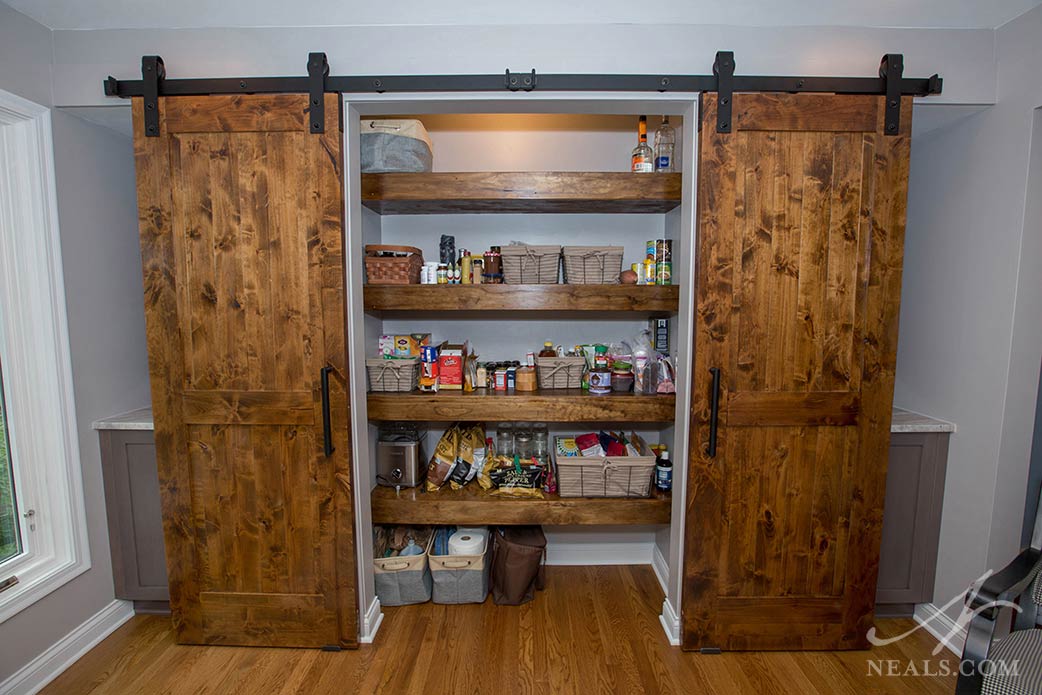
Kitchen Remodel in West Chester
There's no one-size-fits-all pantry, since every home has different space available for pantry storage, and every family has different needs for what needs to be kept in their pantry. For the most part, however, pantries can take one of three general forms: a walk-in room or space, a closet, or a portion of cabinetry integrated within the kitchen. Whichever of these formats you have available, these 5 principles of a good pantry design can still apply.

1. Use open shelving
Open shelving is the best option for pantries. This is easier to accomplish in pantry closets than cabinets, but even behind a cabinet door, shelving that is easy to scan over is a benefit to the convenience of the design. An open shelf limits barriers to accessing pantry goods, makes it easy to spot at a glance what you have on hand, and offers a wide variety of options for additional storage options such as bins and baskets for further corralling specific categories.
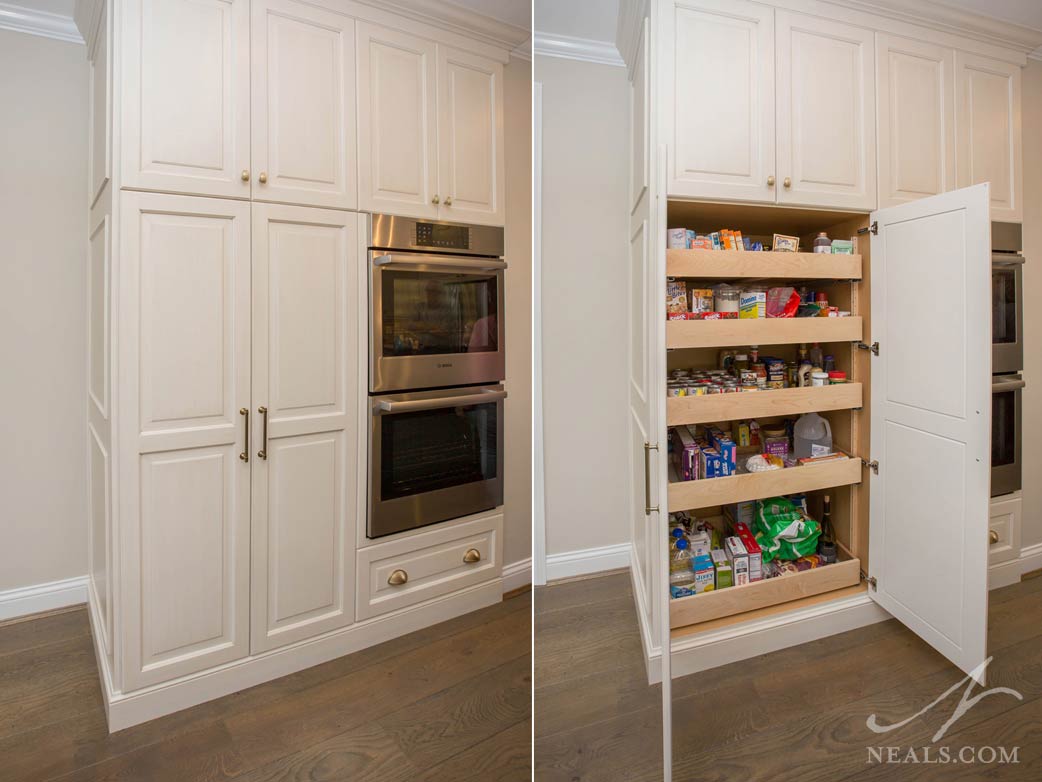
Kitchen Remodel in Williamsburg
2. Include a variety of shelf heights
To get the most out of your pantry's vertical space, make sure to use different shelf heights to accommodate different types of storage. A row of soup cans doesn't need as much vertical space as a row of cereal boxes, so when you think about your common grocery items, consider your needs in terms of how high of a space they might call for. If your pantry shelves are a standard height and non-adjustable, look into specialized organizational tools to double vertical storage space, or consider using stackable storage containers. A good rule of thumb is to reserve the lower shelves for taller items, which can often also be heavier.
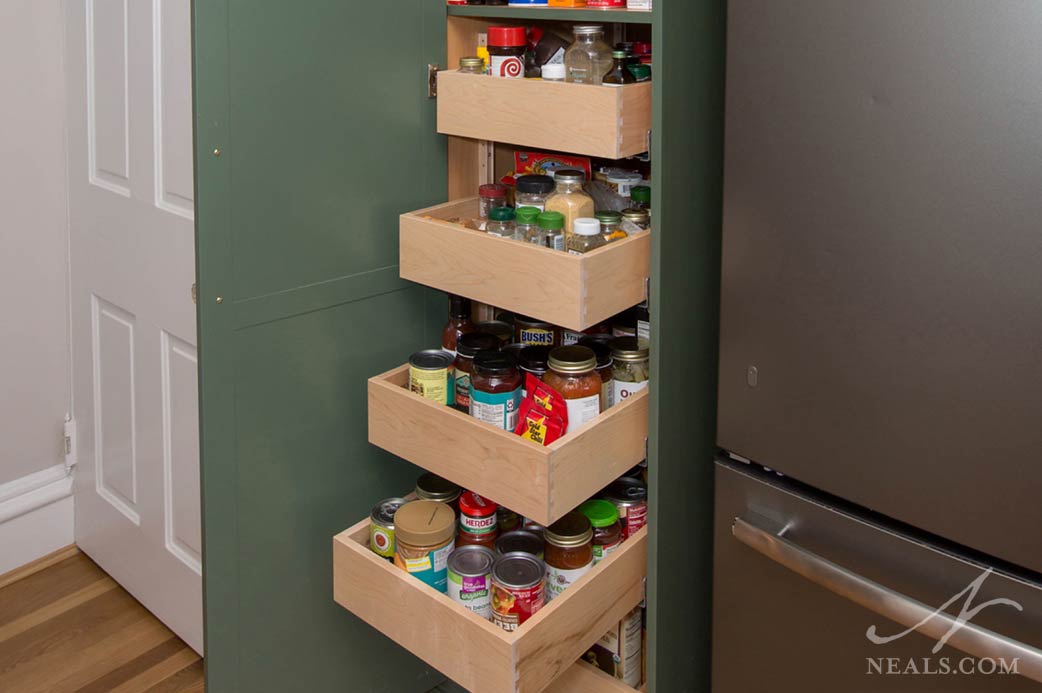
3. Utilize shelf depth intentionally
Just as in the fridge, depth is both a blessing and a curse. The ability to store a lot of items on a deep shelf is great for keeping things well-stocked, but it's also a great way to lose track of what you have. In pantry cabinets, look into using pull-out options that allow you to have easy access to the full depth of a shelf or drawer, so that items that end up at the back don't get forgotten over time.
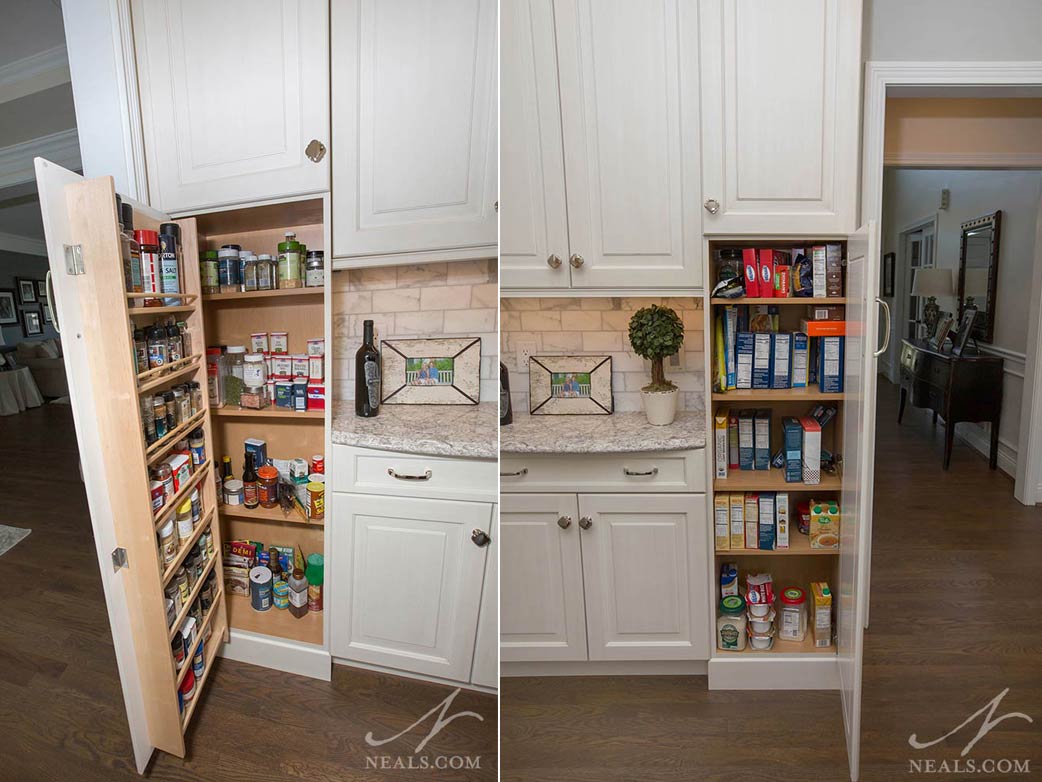
4. Organize in categories
In addition to thinking about the height requirements of your pantry items, pay attention to how you may be able to store like items together or near each other. Whether that's by container type or by purpose is up to you. For example, you could have a column of space over a few shelves that are dedicated to your morning items, and another that stores dinner items. If your pantry is spread over several cabinets, be certain that you're categorizing your storage in a way that makes sense so that you're not searching through multiple cabinets to find what you might need at once for any given meal or situation.
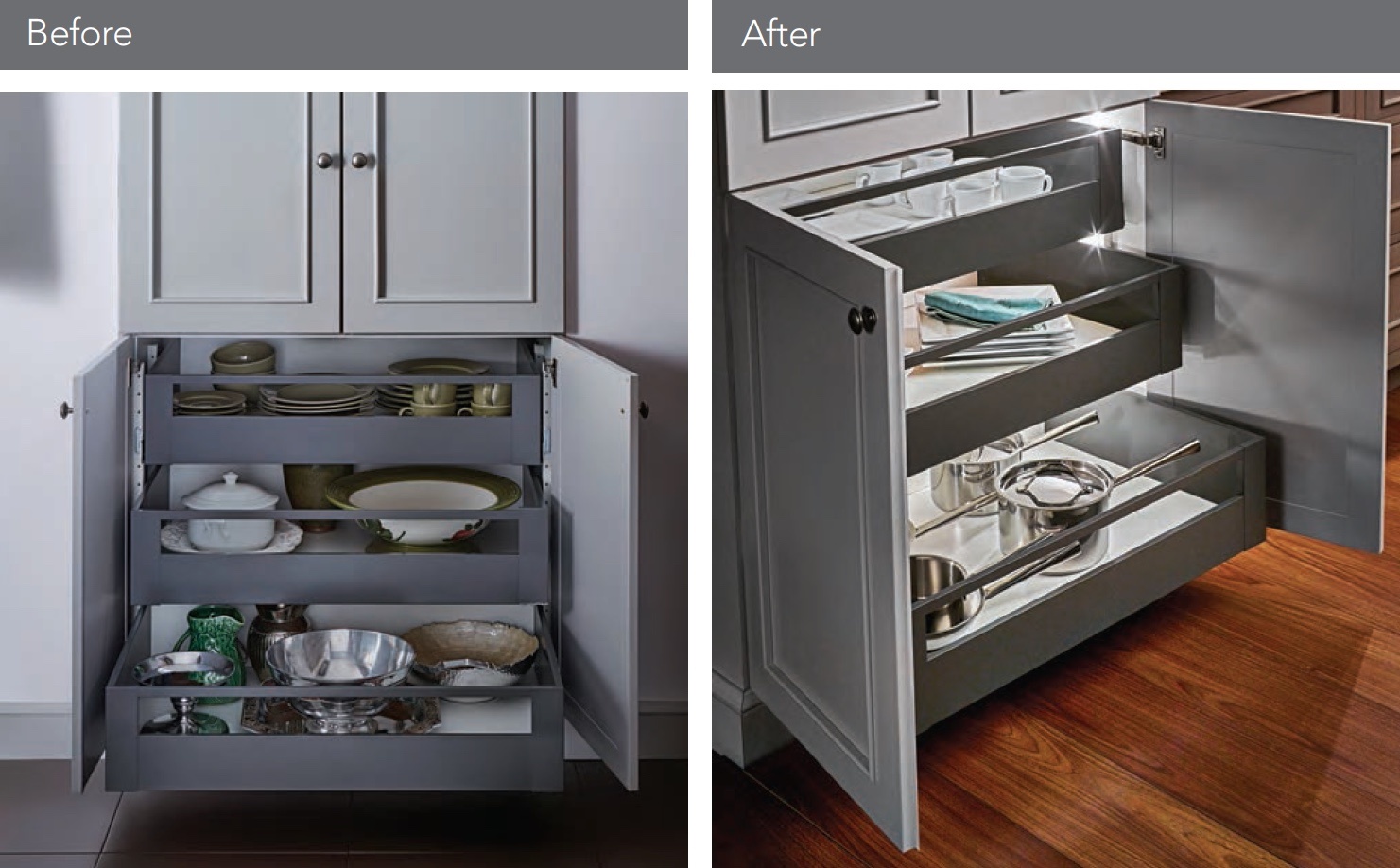
This comparison by Wood-Mode Fine Cabinetry shows how interior cabinet lighting can dramatically improve storage functionality.
5. Don't forget about the lighting
Being able to see your pantry items includes having enough of the right kind of lighting in the space. Install an overhead light with a pleasant temperature of light (like a natural white compact fluorescent bulb) that illuminates the space well enough that you can see the contents of the shelves. This doesn't need to be a boring utility light, however, as long as it's size is correct for the task you need it to perform. For pantry cabinets, consider integrated lighting that turns on when you open the door.











